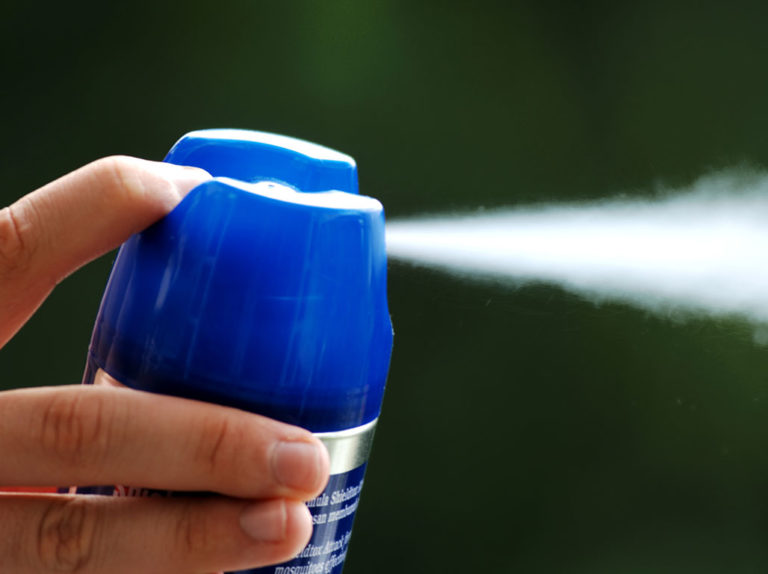Inhalants fall into the following four categories
- Volatile Solvents are liquids that vaporize when exposed to air at room temperature. They are found in numerous household cleaning products and industrial items.
- Aerosols are sprays that contain solvents and propellants. They include spray-paint and various other types of sprays.
- Gases include those used in household and commercial products as well as medical anesthetics. Medical anesthetic gases include ether, chloroform, and nitrous oxide (“laughing gas” or “whippets”), the most abused of these gases.
- Nitrites do not act directly on the central nervous system like most other inhalants; they primarily act to dilate blood vessels and relax the muscles. The two most commonly abused nitrites are amyl and butyl nitrite. “Poppers” or “snappers” are slang terms for small bottles of nitrites.
Inhalants can be household products
Many of these chemicals are found in common household products. As a result, peak use occurs around the 8th grade. In fact, NIDA’s Monitoring The Future survey shows that about 20 percent of 8th graders have abused inhalants at some point. Many young people use inhalants in search of a quick and easy intoxication, but remain unaware of the serious health consequences that can result from this risky behavior. For example, Sudden Sniffing Death Syndrome (SSDS) can occur after the individual’s first use. SSDS is caused by a sudden, unexpected disturbance in the heart’s rhythm.
Physical Effects
The effects of inhalant abuse resemble those of alcohol intoxication. When these chemical vapors are inhaled, the body becomes starved of oxygen, forcing the heart to beat more rapidly in order to increase blood flow to the brain. The high begins after a few seconds and can include dizziness, distortion in perceptions of time and space, and stimulant effects. This high lasts just a few minutes; however, users will often repeatedly use in order to sustain the high. After the initial effects of inhalant use begin to wear off, the senses become depressed and a sense of lethargy may arise as the user’s body attempts to restore proper blood flow to the brain. Many users experience headache, nausea or vomiting, slurred speech, loss of motor coordination, and wheezing.
The following parts of the body can be affected by inhalant abuse
- Acoustic nerve and muscle – Damage to the cells that relay sound to the brain may cause deafness.
- Blood – Inhalants can drastically reduce the amount of oxygen able to be carried in the blood.
- Bone marrow – Vapors containing benzene have been shown to cause leukemia.
- Brain – Damage can occur in the cerebral cortex and cerebellum, resulting in personality changes, memory impairment, hallucinations, loss of coordination, and slurred speech.
- Heart – Sudden sniffing death syndrome (SSDS) is an unexpected disturbance in the heart’s rhythm, and can cause heart failure.
- Kidneys – The kidneys lose their ability to control the amount of acid in the blood. Also, kidney stones may develop.
- Liver – Accumulation of fatty tissue may cause liver damage.
- Lungs – Repeated use can damage lungs and impair breathing.
- Muscle – Inhalant abuse can lead to muscle deterioration and reduced muscle tone and strength. Peripheral nervous system – Damage to the nerves can cause tingling, numbness, or paralysis.
- Skin – A severe rash, known as “glue-sniffer’s rash,” may develop around the nose and mouth.
Psychological Effects
Users usually experience a “head rush” when using inhalants. This is a short-lived high that involves a distortion of reality (visual and auditory) and a loss of inhibition. During the peak of this high, users are often compelled to sit in a stupor and giggle – this explains why nitrous oxide is commonly referred to as “laughing gas.” Both short-term and long-term inhalant use has been shown to cause brain damage, hindering transmission of information.
Methods of Use
Inhalants may be sniffed directly from an open container or “huffed” from a rag soaked in the substance and held to the face. In addition, the open container or soaked rag can be placed in a bag where the vapors become concentrated before being inhaled. Aerosols are sometimes inhaled from a spray bottle, using a rag as a filter. Users commonly inhale nitrous oxide by breathing from nitrous-filled balloons.
Slang Terms for Inhalants
- Nitrous Oxide
- Laughing Gas
- Whippets
- Hippie Crack
- Buzz Bomb
Amyl Nitrate
- Poppers
- Boppers
- Ames
- Amies
- Amys
- Pearls
Isobutyl Nitrate
- Poppers
- Quicksilver
- Rush
- Snappers
- Thrust
- Locker Room
- Aroma of Men
- Bullet
- Bolt
- Climax
- Hardware
Use & Users:
Using inhalants
- Bagging,
- Glading
- Huffing
- Snorting
Inhalant User
- Airhead
- Bagger
- Huffer
- Cracker – Tool used to open a canister of nitrous oxide
Indicators of inhalant abuse may include
- Paint or stains on the body or clothing
- Hidden rags, cloths, or empty containers
- Spots or sores around the mouth or nose
- Red or runny eyes and nose
- A chemical odor on the breath
- A dazed or dizzy appearance
- Loss of appetite
- Excitability
- Irritability
- Problems in school (failing grades, learning problems, absences)
- Memory loss
- General apathy
Sustained inhalant use can cause tolerance; in addition, withdrawal symptoms develop after use is stopped. These symptoms can include
- Sweating
- Rapid pulse
- Hand tremors
- Insomnia
- Nausea
- Vomiting
- Physical agitation
- Anxiety
- Hallucinations
- Seizures.
Paraphernalia
Some paraphernalia that can indicate abuse of inhalants include
- Nitrous canisters
- Canister “crackers”
- Large balloons
- Small bottles or vials containing liquid
- Empty bottles
- Whipped cream containers
- Rags
- Suspicious collections of household products.
A listing of products often abused as inhalants.
- Volatile solvents—liquids that vaporize at room temperature
- Industrial or household products, including paint thinners or removers, degreasers, dry-cleaning fluids, gasoline and lighter fluid
- Art or office supply solvents, including correction fluids, felt-tip marker fluid, electronic contact cleaners, and glue
- Aerosols—sprays that contain propellants and solvents
- Household aerosol propellants in items such as spray paints, hair or deodorant sprays, fabric protector sprays, aerosol computer cleaning products, and vegetable oil sprays
- Gases—found in household or commercial products and used as medical anesthetics
- Household or commercial products, including butane lighters and propane tanks, whipped cream aerosols or dispensers (whippets), and refrigerant gases
- Medical anesthetics, such as ether, chloroform, halothane, and nitrous oxide (“laughing gas”)
- Nitrites—used primarily as sexual enhancers
- Organic nitrites are volatiles that include cyclohexyl, butyl, and amyl nitrites, commonly known as “poppers.” Amyl nitrite is still used in certain diagnostic medical procedures.
- When marketed for illicit use, organic nitrites are often sold in small brown bottles labeled as “video head cleaner,” “room odorizer,” “leather cleaner,” or “liquid aroma.”
Courtesy The University of Maryland
If you or someone you know is having a problem with inhalants, visit Recovery Guidance the free and safe resource to find addiction and mental health professionals near you.
Save





















